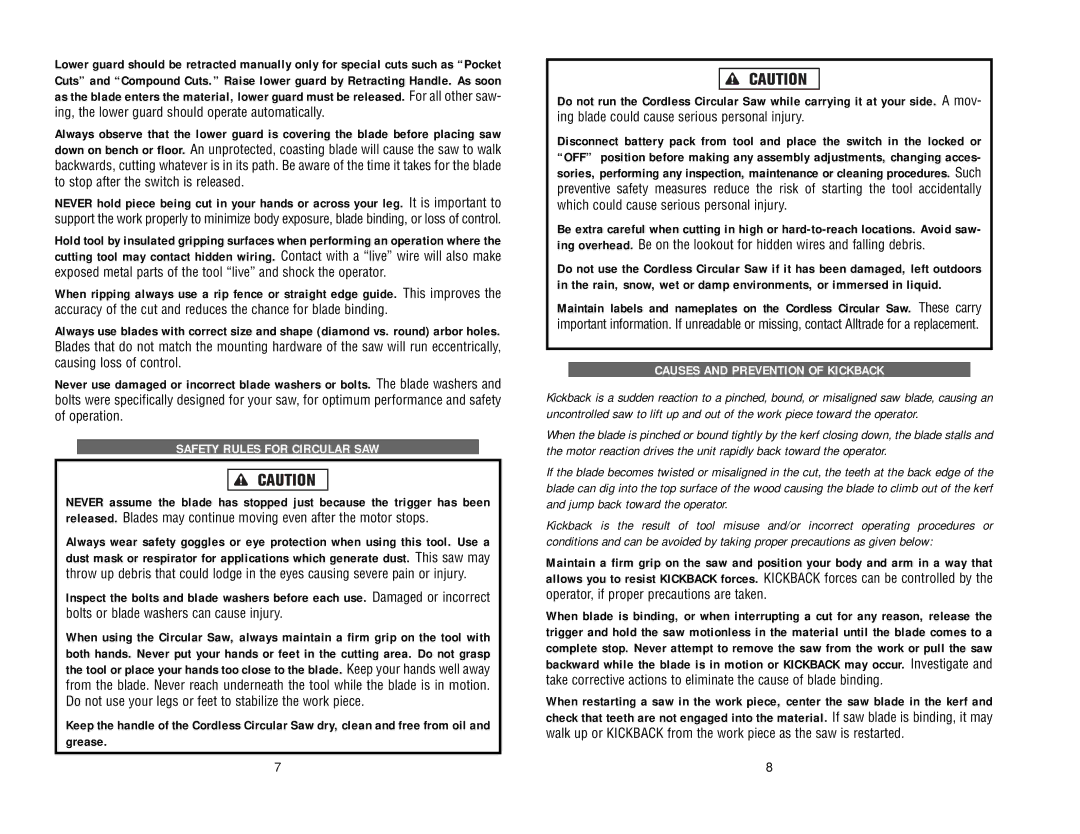840056 specifications
The Kawasaki 840056 is an advanced model that showcases the company's commitment to innovation and performance in the machinery sector. This machine is engineered with a focus on versatility and efficiency, making it ideal for a wide range of applications, from construction to agricultural tasks.One of the standout features of the Kawasaki 840056 is its powerful engine. The machine is equipped with a cutting-edge, high-performance engine that delivers impressive horsepower while maintaining fuel efficiency. This balance ensures that operators can complete jobs quickly without excessive fuel consumption, minimizing operating costs.
The design of the Kawasaki 840056 emphasizes user comfort and convenience. The cab is spacious, outfitted with ergonomic controls, high visibility, and an intuitive dashboard that provides critical information at a glance. Operators benefit from adjustable seating and climate control options, ensuring that long hours of operation can be undertaken with maximum comfort.
In terms of technology, the Kawasaki 840056 incorporates advanced systems that enhance its operational capabilities. The machine features a state-of-the-art hydraulic system, providing exceptional lifting power and precision. This system is complemented by an innovative load sensing mechanism, which ensures that hydraulic power is used efficiently, adapting automatically to the demands of the task at hand.
Safety is a top priority in the design of the Kawasaki 840056. The machine comes equipped with multiple safety features, including stability monitoring systems, anti-rollover technologies, and implement safety locks. These enhancements not only protect the operator but also ensure the safety of those working nearby.
Additionally, the Kawasaki 840056 is designed for easy maintenance. Access to critical components is simplified, allowing technicians to perform routine checks and repairs quickly. This user-friendly design can significantly reduce downtime, keeping productivity levels high.
Durability is another hallmark of the Kawasaki 840056. Constructed with high-quality materials and engineered to withstand tough working conditions, this machine is built to last. Whether faced with extreme weather or heavy workloads, the Kawasaki 840056 is up to the challenge, making it a reliable choice for professionals in various industries.
In conclusion, the Kawasaki 840056 represents a blend of power, efficiency, and user-friendly features, making it a compelling option for anyone in need of reliable and versatile machinery. With its advanced technologies and focus on safety and comfort, it stands out as a leader in its class.

